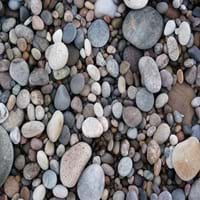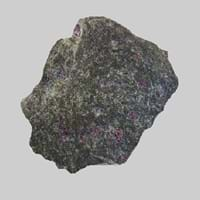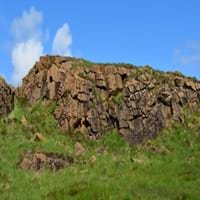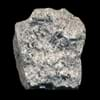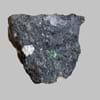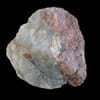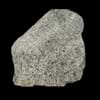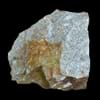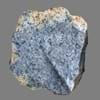Peridotite Rock
Definition
0
Definition
Peridotite is a dense, coarse-grained plutonic is the main constituent of the earth's mantle 0
History
0
Origin
Pike County, U.S 0
Discoverer
Unknown 0
Etymology
From French, from peridot + -ite 0
Class
Igneous Rocks 0
Sub-Class
Durable Rock, Medium Hardness Rock 0
Family
0
Group
Plutonic 0
Other Categories
Coarse Grained Rock, Opaque Rock 0
Texture
0
Texture
Phaneritic 0
Color
Dark Greenish - Grey 0
Maintenance
Less 0
Durability
Durable 0
Water Resistant
Yes 0
Scratch Resistant
Yes 0
Stain Resistant
No 0
Wind Resistant
No 0
Acid Resistant
No 0
Appearance
Rough and Shiny 0
Uses
0
Architecture
0
Interior Uses
Decorative Aggregates, Interior Decoration 0
Exterior Uses
As Building Stone, As Facing Stone, Garden Decoration 0
Other Architectural Uses
Curbing 0
Industry
0
Construction Industry
As Dimension Stone, Cobblestones 0
Medical Industry
Not Yet Used 0
Antiquity Uses
Monuments, Sculpture, Small Figurines 0
Other Uses
0
Commercial Uses
Creating Artwork, Gemstone, Jewelry, Source of Chromite, Platinum, Nickel and Garnet, Source of Diamonds 0
Types
0
Types
Dunite, Wehrlite, Harzburgite, Lherzolite and Pyrolite 0
Features
Constitutes upper part of the Earth's mantle, Generally rough to touch, Host rock for Diamond, Is one of the oldest rock 0
Archaeological Significance
0
Monuments
Used 0
Famous Monuments
Data Not Available 0
Sculpture
Used 0
Famous Sculptures
Data Not Available 0
Pictographs
Used 0
Petroglyphs
Used 0
Figurines
Used 0
Fossils
Absent 0
Formation
0
Formation
Peridotites can be formed in two ways: as mantle rocks formed during the accretion and differentiation of the Earth or as cumulate rocks formed by precipitation of olivine and pyroxenes from basaltic magmas. 0
Composition
0
Mineral Content
Amphibole, Chromite, Garnet, Magnesium, Olivine, Phlogopite, Plagioclase, Pyroxene 0
Compound Content
Ca, Fe, Mg, Potassium, Silicon Dioxide, Sodium, Titanium Dioxide 0
Transformation
0
Metamorphism
Yes 0
Types of Metamorphism
Burial Metamorphism, Cataclastic Metamorphism, Contact Metamorphism, Hydrothermal Metamorphism, Impact Metamorphism, Regional Metamorphism 0
Weathering
Yes 0
Types of Weathering
Biological Weathering, Chemical Weathering, Mechanical Weathering 0
Erosion
Yes 0
Types of Erosion
Chemical Erosion 0
Properties
0
Physical Properties
0
Hardness
5.5-6 0
Grain Size
Coarse Grained 0
Fracture
Irregular 0
Streak
White 0
Porosity
Less Porous 0
Luster
Shiny 0
Compressive Strength
107.55 N/mm2 19
Cleavage
Imperfect 0
Toughness
2.1 0
Specific Gravity
3-3.01 0
Transparency
Translucent to Opaque 0
Density
3.1-3.4 g/cm3 0
Thermal Properties
0
Specific Heat Capacity
1.26 kJ/Kg K 5
Resistance
Heat Resistant, Pressure Resistant, Wear Resistant 0
Reserves
0
Deposits in Eastern Continents
0
Asia
China, India, Indonesia, Kazakhstan, Russia, South Korea, Thailand, Turkey 0
Africa
Morocco, South Africa 0
Europe
Finland, France, Georgia, Germany, Great Britain, Italy, Kazakhstan, Netherlands, Norway, Spain, Switzerland, Venezuela 0
Others
Not Yet Found 0
Deposits in Western Continents
0
North America
Canada, USA 0
South America
Brazil 0
Deposits in Oceania Continent
0
Australia
New Zealand, Western Australia 0
Information about Peridotite
Rocks are naturally occurring solids which are composed of minerals & have been used by humans since ages. From Stone Age, rocks are used for various purposes. Also, the metals and minerals found in rock play an important role in our life. Get to know all the Peridotite Uses. We have provided you with all information about Peridotite rock here. Peridotite is a dense, coarse-grained plutonic is the main constituent of the earth's mantle. Peridotite is available in dark greenish - grey colors. The streak of a rock is the color of powder produced when it is dragged across an unweathered surface. The streak of Peridotite is white. Get to know more about Peridotite rock and characteristics of Peridotite rock in the next sections.
|
||
|
||
|
